Rāja Mandhata
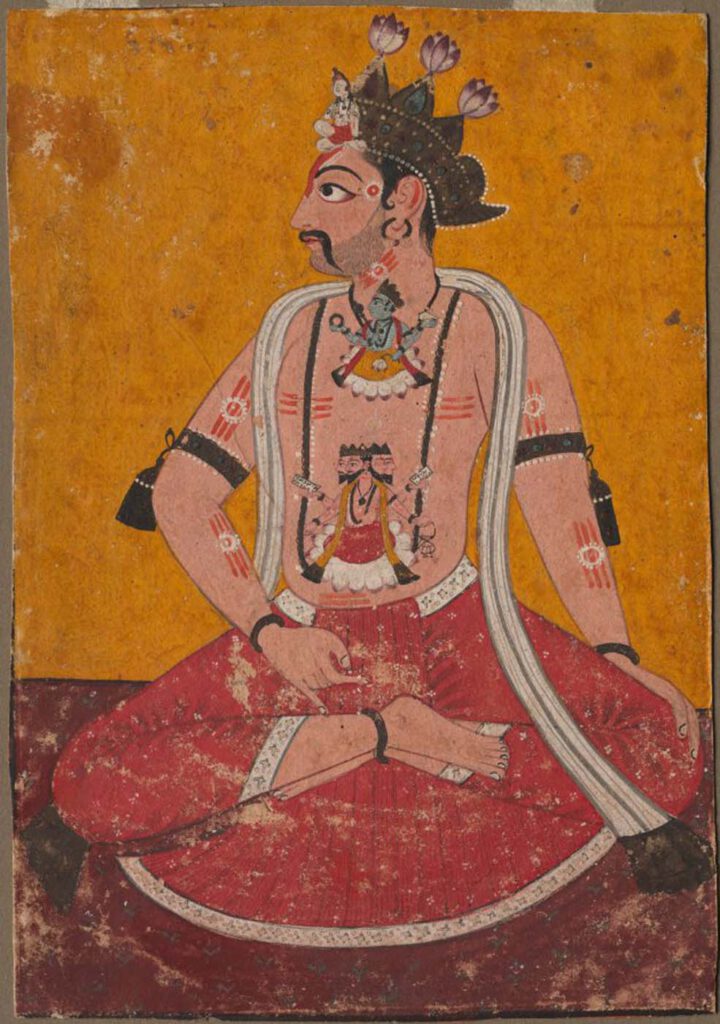
Rāja Mandhata Nurpur, Himachal Pradesh, India c. 1690–1700. Source: Cleveland Museum of Art CC0 1.0 Universal (CC0 1.0) – The yogic body was configured in different ways by various traditions. The abdomen was thought to be the seat of fire in the body, and it could be stimulated by the practice of physical yoga postures, […]
Food’s Course of Movement in the Intestines (engraving)
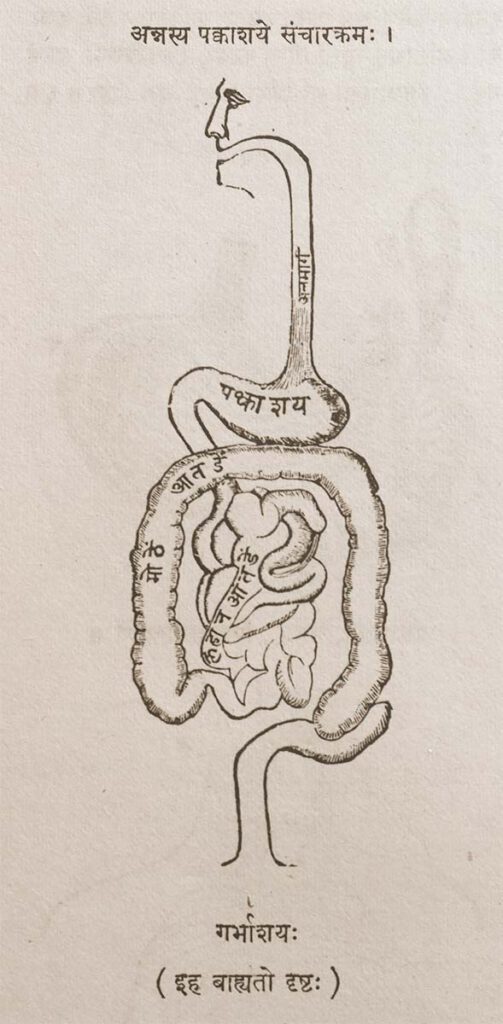
Food’s Course of Movement in the Intestines (engraving) Provenance: Printed Book, page 44. Anglicized Bibliographic data The Śārṅgadhara-saṃhitā by Paṇḍit Śārṅgadharāchārya, son of Paṇḍit Dāmodara with the commentary Aḍhamalla’s Dīpikā and Kāśīrāma’s Gūḍhārtha-Dīpikā. Ed. Paṇḍitaparaśurāmaśāstri. Bombay: Pāndurang Jāwajī, Nirṇaya-Sāgar Press, 1931. Sanskrit Title and Author in Roman font śrīmatpaṇḍitadāmodarasūnu-śārṅgadharācāryaviracitā . śārṅgadharasaṃhitā . bhiṣagvarāḍhamallaviracitadīpikā-paṇḍitakāśirāmavaidyaviracita-gūḍhārthadīpikābhyāṃ ṭīkābhyāṃ saṃvalitā […]
Indian anatomical painting
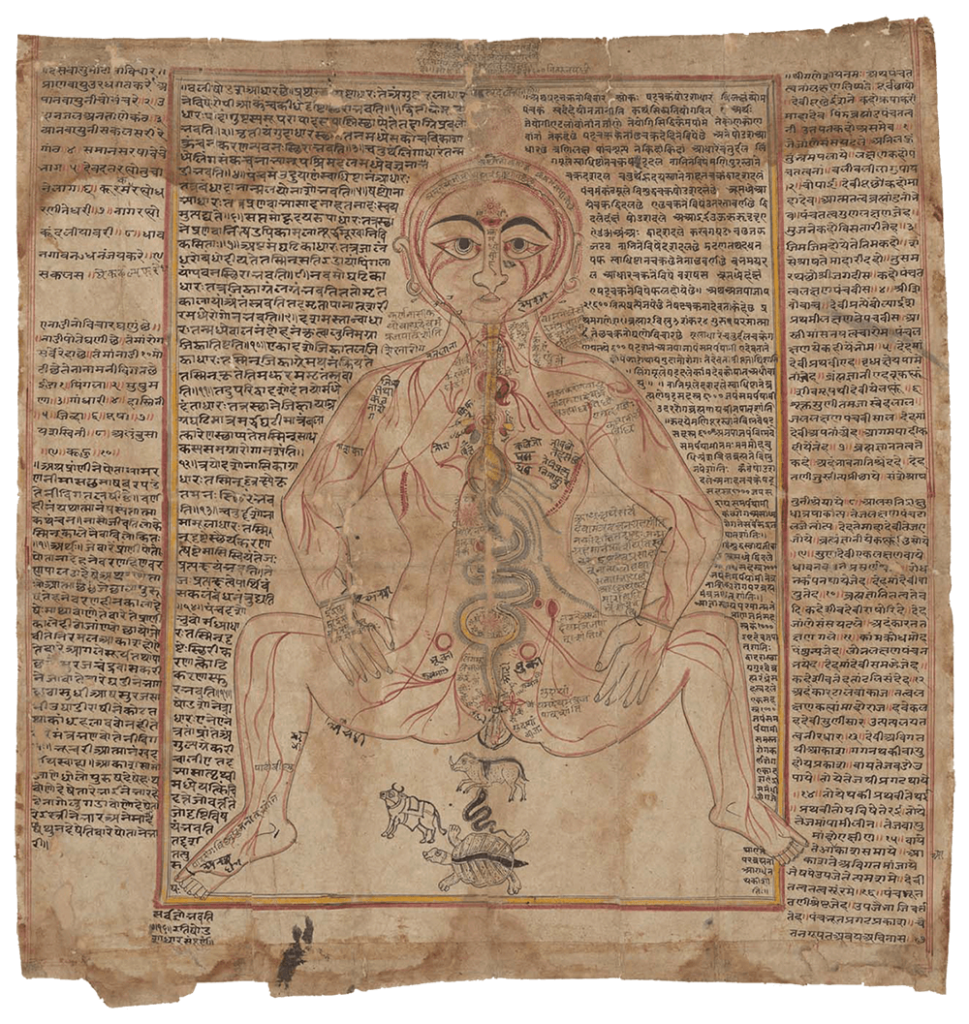
Indian anatomical painting Circa eighteenth century, western India. An old-Gujarati manuscript (circa 1900?). (Wellcome MS Indic d 74. Photo Wellcome Library, London.) Source: Wellcome Collection CC BY-NC-SA 4.0 – Premodern anatomical images in India were influenced by Persian drawings on anatomy, particularly during the Mughal dynasty’s reign in north India from the sixteenth to eighteenth […]
A human anatomical figure
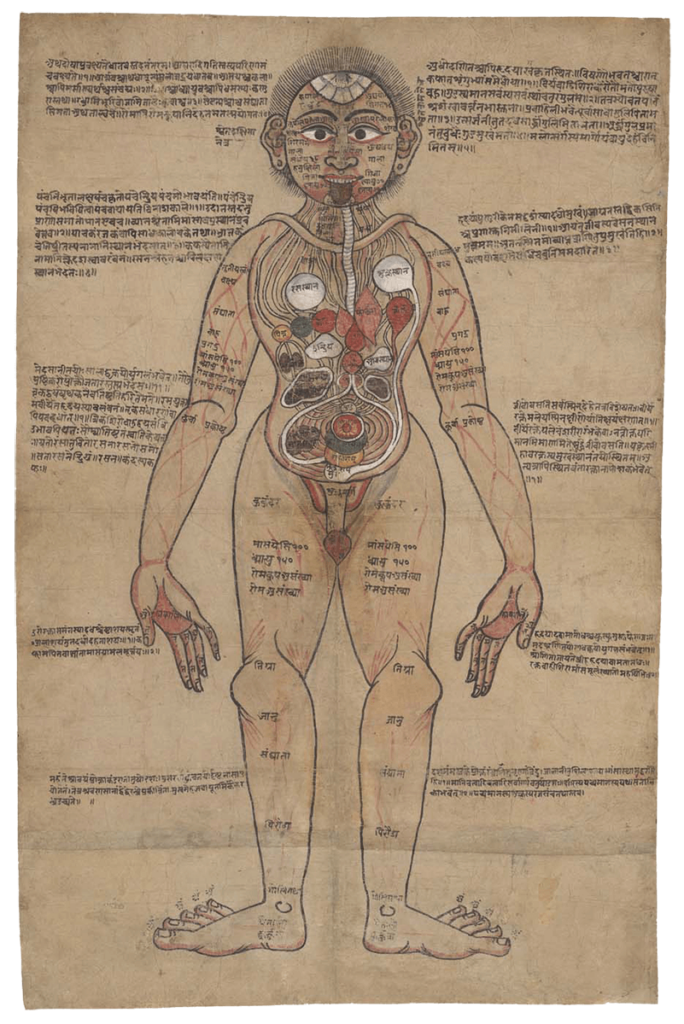
A human anatomical figure Drawing, Nepalese, ca. 1800 (?) Source: Wellcome Library no. 574912iWellcome Collection. Public Domain Mark. – Although India has thousands of manuscripts of premodern medical texts, only a handful contain anatomical illustrations. Text was crucially important for transmitting medical teachings. Figure 1 combines text with an illustration of the body and its […]
Anonymous, K. Sharḥ al-Maqāma al-Ṣalāḥiyya fī l-Khayl wa-al-Bayṭāra
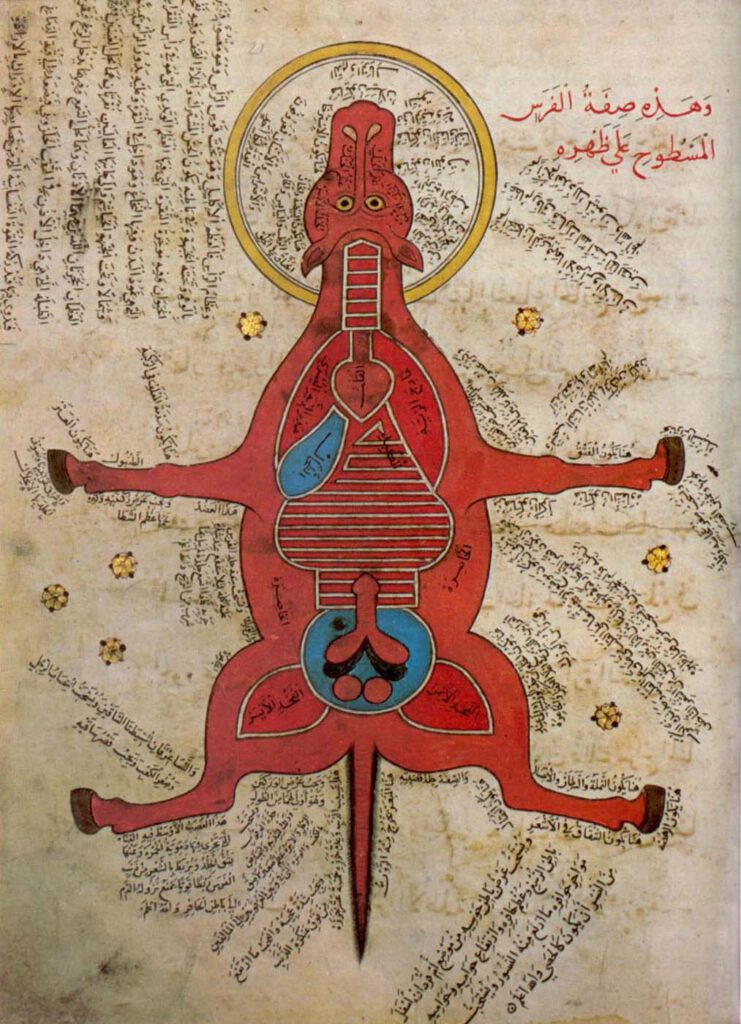
Anonymous, K. Sharḥ al-Maqāma al-Ṣalāḥiyya fī l-Khayl wa-al-Bayṭāra (Commentary on the Maqāma Ṣalāḥiyya on Horses and Venterinary) Istanbul University Library MS 4689 – Egypt, 15th c. – Hyppiatry has a long tradition in Islamic literature. Works dealing with horses may adopt different literary genres and cover a wide range of disciplines, from veterinary sciences to […]
Representation of a woman with the distribution of the blood vessels and the internal organs (f. 15v)
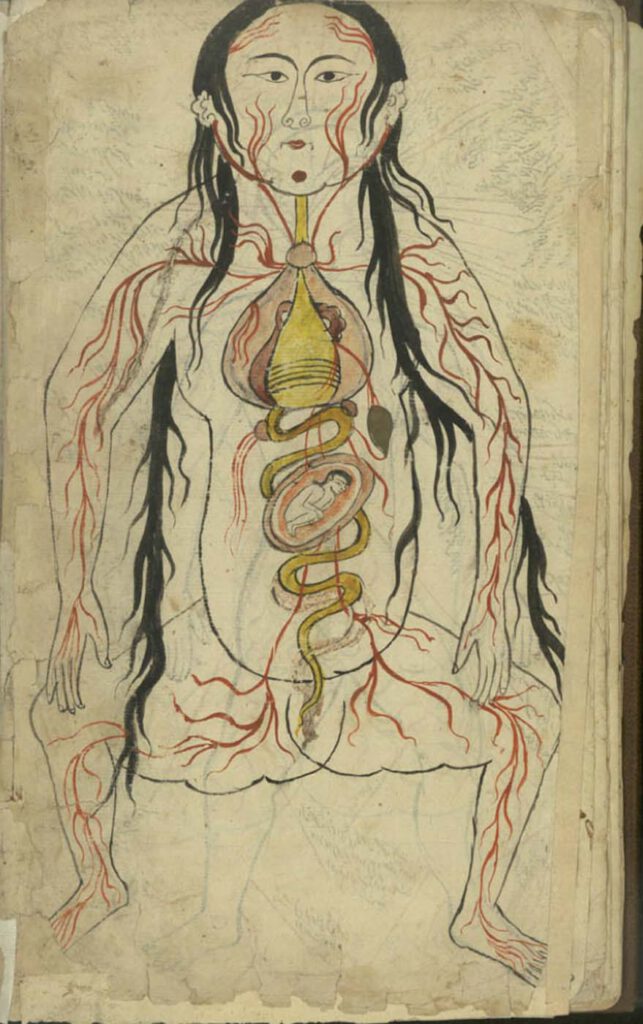
Representation of a woman with the distribution of the blood vessels and the internal organs (f. 15v) Manṣūr ibn Ilyās (fl. 14th c.), Tashrīḥ-i badan-i insān. Images from: Teheran MS Majlis 7430. Undated. This image represents the heart, lungs, liver, esophagus/larynx, stomach, intestines, kidneys, and spleen). As in the male representation, the organs involved in […]
Representation of a man with the distribution of the blood vessels and the internal organs (f. 13v)
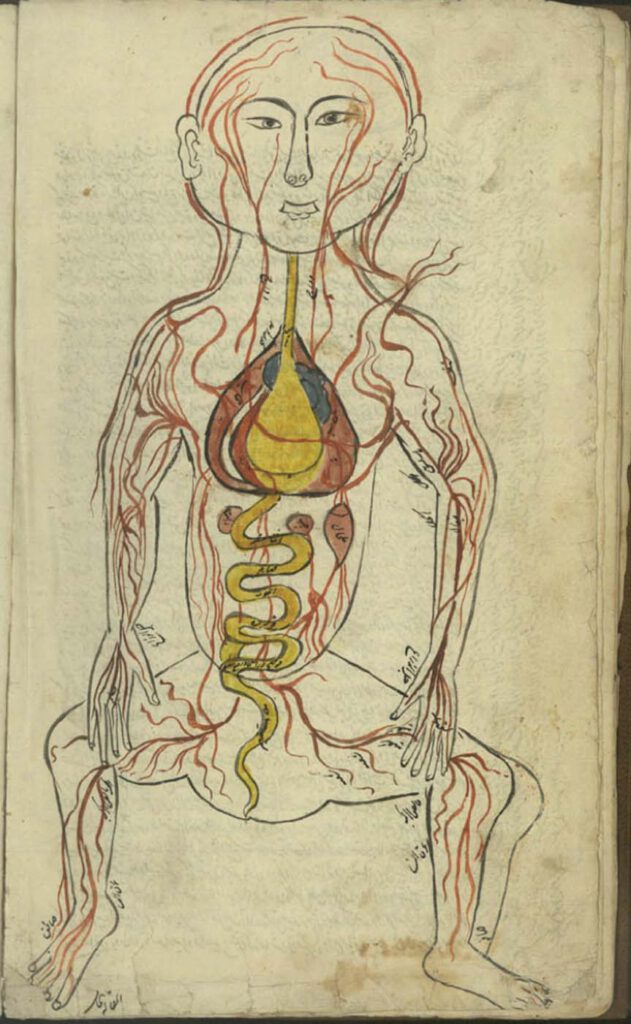
Representation of a man with the distribution of the blood vessels and the internal organs (f. 13v) Manṣūr ibn Ilyās (fl. 14th c.), Tashrīḥ-i badan-i insān. Images from: Teheran MS Majlis 7430. Undated. The illustration depicts the heart, lungs, liver, esophagus/larynx, stomach, intestines, kidneys, and spleen. The organs involved in digestion are coloured in yellow. […]
Manchu face, Universal body
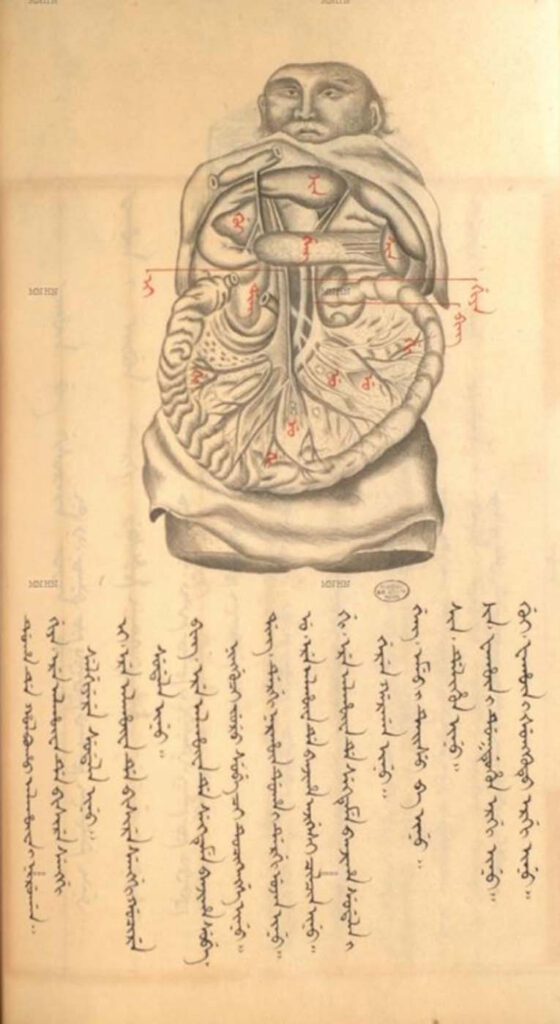
Manchu face, Universal body (Early 18th century) Ge ti ciowan lu bithe, or Manchu Anatomy (based on Thomas Bartholin, Anatomia, 1684), Muséum national d’Histoire naturelle, Paris – The Jesuits actively persuaded the Kangxi Emperor to study anatomy. They hoped that he would convert to Christianity while marveling at the wonders of the various parts of […]
The Dissected Horse

The Dissected Horse (15th century?) Pictorial Scroll of Hippiatry, Azabu University, Tokyo – Buddhist monks introduced veterinary medicine to Japan, and they also infiltrated animal medicine with religious connotations. There are several different schools of hippiatry painting scrolls in Japan, with slightly different contents, but they all include anatomical diagrams of the internal organs of […]
Diagrams of the internal organs
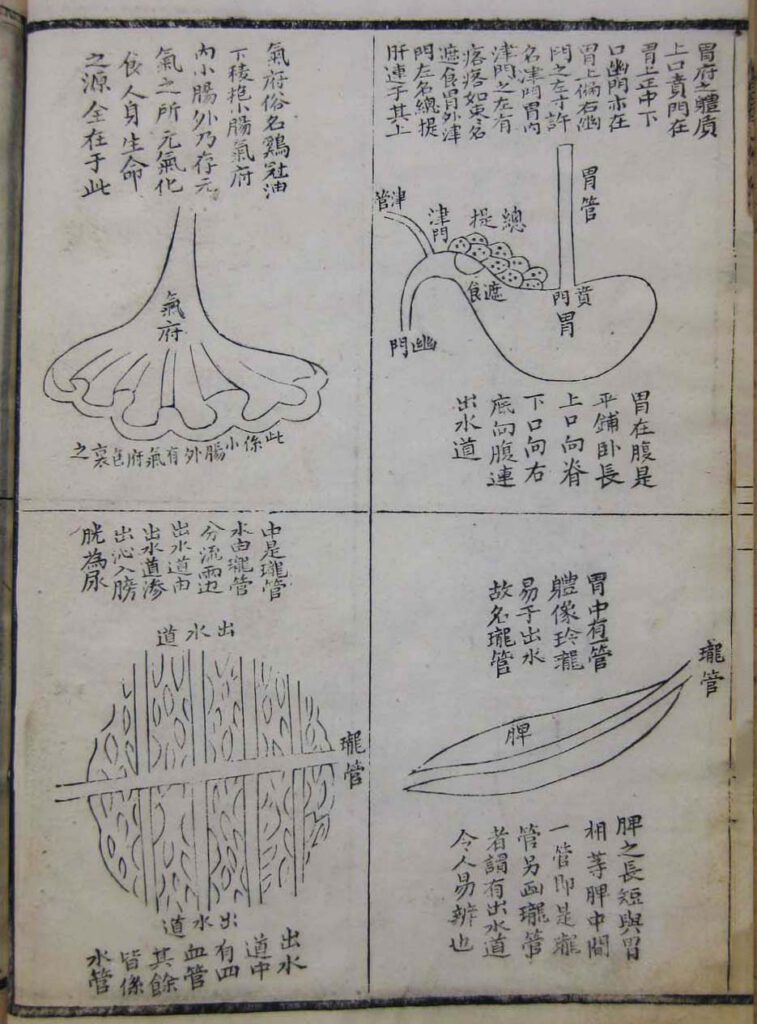
Diagrams of the internal organs from Wang Qingren (1768-1831), Correcting the Errors of Doctors (Yilin gaicuo), first printed in 1830. Jinqi shuye deji woodblock edition, 1847. In the library collection of the Needham Research Institute – Besides revising older depictions of the organs, Wang focused attention on structures that had not been previously discussed in medical […]
